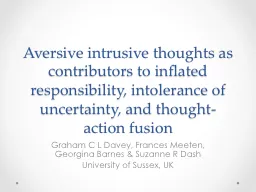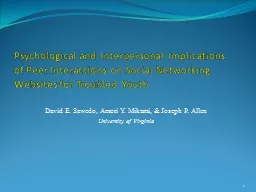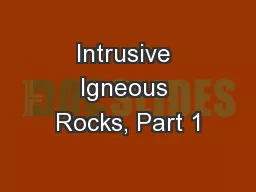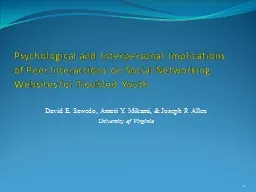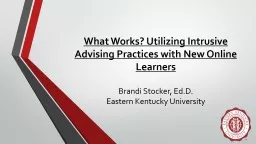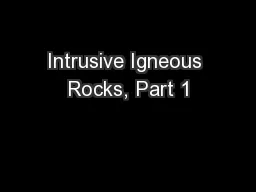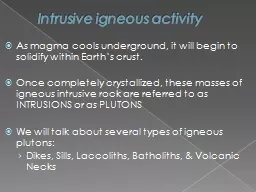PPT-Aversive intrusive thoughts as contributors to inflated res
Author : karlyn-bohler | Published Date : 2015-12-08
Graham C L Davey Frances Meeten Georgina Barnes amp Suzanne R Dash University of Sussex UK What are Clinical Constructs Inferred states or processes derived most
Presentation Embed Code
Download Presentation
Download Presentation The PPT/PDF document "Aversive intrusive thoughts as contribut..." is the property of its rightful owner. Permission is granted to download and print the materials on this website for personal, non-commercial use only, and to display it on your personal computer provided you do not modify the materials and that you retain all copyright notices contained in the materials. By downloading content from our website, you accept the terms of this agreement.
Aversive intrusive thoughts as contributors to inflated res: Transcript
Download Rules Of Document
"Aversive intrusive thoughts as contributors to inflated res"The content belongs to its owner. You may download and print it for personal use, without modification, and keep all copyright notices. By downloading, you agree to these terms.
Related Documents

